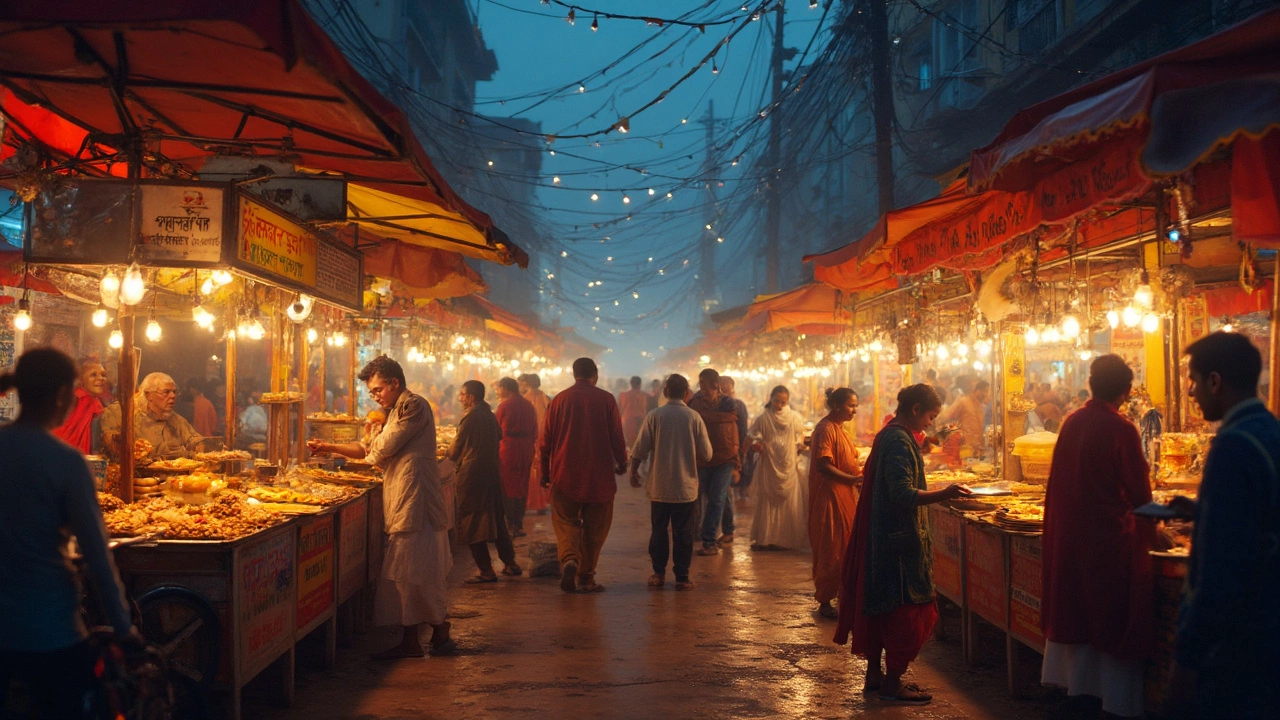Street Food India: A Flavorful Journey Through India’s Best Snacks
When talking about street food India, the bustling, affordable bites you find on city corners, market stalls and railway platforms across the subcontinent. Also known as Indian street snacks, it captures everything from crispy papads to sizzling chaat, each rooted in local culture. Regional flavors, the distinct taste profiles that vary from the tangy tamarind of Maharashtra to the sweet coconut of Kerala give each snack its own identity, while spice blends, the mix of roasted, ground and fresh spices that power the heat and aroma act as the secret engine behind every bite. Finally, the whole experience is built around quick meals, fast, satisfying dishes that fit a busy day, making street food India a perfect study of flavor, speed, and culture.
What Makes Indian Street Food So Irresistible?
First, the mix of textures – crunchy, soft, soggy, and juicy – keeps your palate guessing. A typical chaat combines puffed puri, boiled potatoes, tangy chutney and a sprinkling of sev for crunch. Next, the balance of sweet, sour, salty, and spicy creates harmony; a single bite can surprise you with a burst of tamarind’s sourness followed by a whisper of jaggery’s sweetness. These taste dynamics are amplified by the regional flavors we mentioned earlier, which influence which ingredients are chosen and how they’re cooked. For instance, Delhi’s chaat often leans on tangy mint‑coriander chutney, while Kolkata’s kathi rolls favor mustard oil and fermented pickle flavors.
Behind the scenes, spice blends are the engine that turns ordinary ingredients into iconic street foods. Garam masala, chaat masala, and sambar powder each bring a unique profile. Garam masala offers warmth with cloves and cinnamon, while chaat masala adds that signature zing of black salt and dried mango powder. Understanding these blends helps you recreate street‑side magic at home, whether you’re making a buttery pav bhaji or a smoky aloo tikki. The science is simple: spices release volatile oils when toasted, creating depth that cheap street‑side stalls achieve with high heat and quick turnover.
Speed matters, too. Street vendors master the art of quick meals – they pre‑cook components, keep sauces ready, and use high‑heat pans to finish dishes in minutes. This efficiency is why many of the recipes we feature in the collection below are designed for home cooks who want authentic flavor without spending hours in the kitchen. Think of a quick masala dosa with a ready‑made batter, or a simple bhel puri that comes together with pre‑roasted peanuts and ready‑made sev. The same principles apply: prep ingredients ahead, use a hot wok or tava, and finish with a drizzle of fresh chutney.
Health isn’t ignored either. While street food gets a reputation for being greasy, many snacks are surprisingly balanced. A bowl of papdi chaat can pack protein from chickpeas, fiber from boiled potatoes, and antioxidants from fresh herbs. Our articles on lemon in biryani and dal nutrition illustrate how a splash of acidity or a careful choice of lentils can boost flavor while keeping dishes light. Applying those insights to street foods – like adding a squeeze of lemon to aloo tikki or swapping deep‑fried papad for a roasted version – lets you enjoy the taste without overindulging.
Culture ties everything together. Street food often reflects religious festivals, local harvests, and seasonal produce. During monsoon, hot pakoras and chai dominate; in summer, cool coconut water and fruit chaat take over. Knowing these patterns helps you anticipate which snacks will be available and why certain flavors peak at specific times. This cultural rhythm also informs the regional flavors we discussed earlier, reinforcing the idea that street food India is a living, evolving tapestry.
For those who love experimenting, the concept of “fusion street food” is gaining traction. Chefs blend classic Indian spices with global techniques – think taco‑style naan wraps or sushi‑inspired masala rolls. While these creations may seem modern, they still rely on the core principles of spice blends, quick preparation, and bold flavor balance that define traditional street snacks. Our guide on paneer vs tofu, for example, shows how swapping proteins can give a fresh twist to a familiar dish without losing authenticity.
So whether you’re a beginner looking to understand why a dash of chaat masala makes a difference, or an experienced cook aiming to perfect the crunch of a perfectly fried bhujia, the collection below has something for you. You’ll find deep dives into classic dishes, science‑backed tips on ingredients like lemon and dairy, and practical how‑tos for everything from rotis that puff to chutneys that last longer.
Ready to explore? Below you’ll discover a curated set of articles that break down the flavors, techniques, and stories behind India’s most beloved street foods. Dive in, pick up a new tip, and bring the bustling energy of a Delhi lane or a Mumbai beachside stall right into your kitchen.

When Do People in India Enjoy Dinner?
In India, dinner time varies widely across regions and cultures, influenced by lifestyle, work schedules, and social norms. While some start eating as early as 7 PM, others might not dine until 10 PM. Street food culture plays a big role in determining when people eat, with bustling markets often extending mealtime into later hours. Understanding these patterns can offer insights into India's diverse eating habits and the vibrant role street food plays in everyday life.